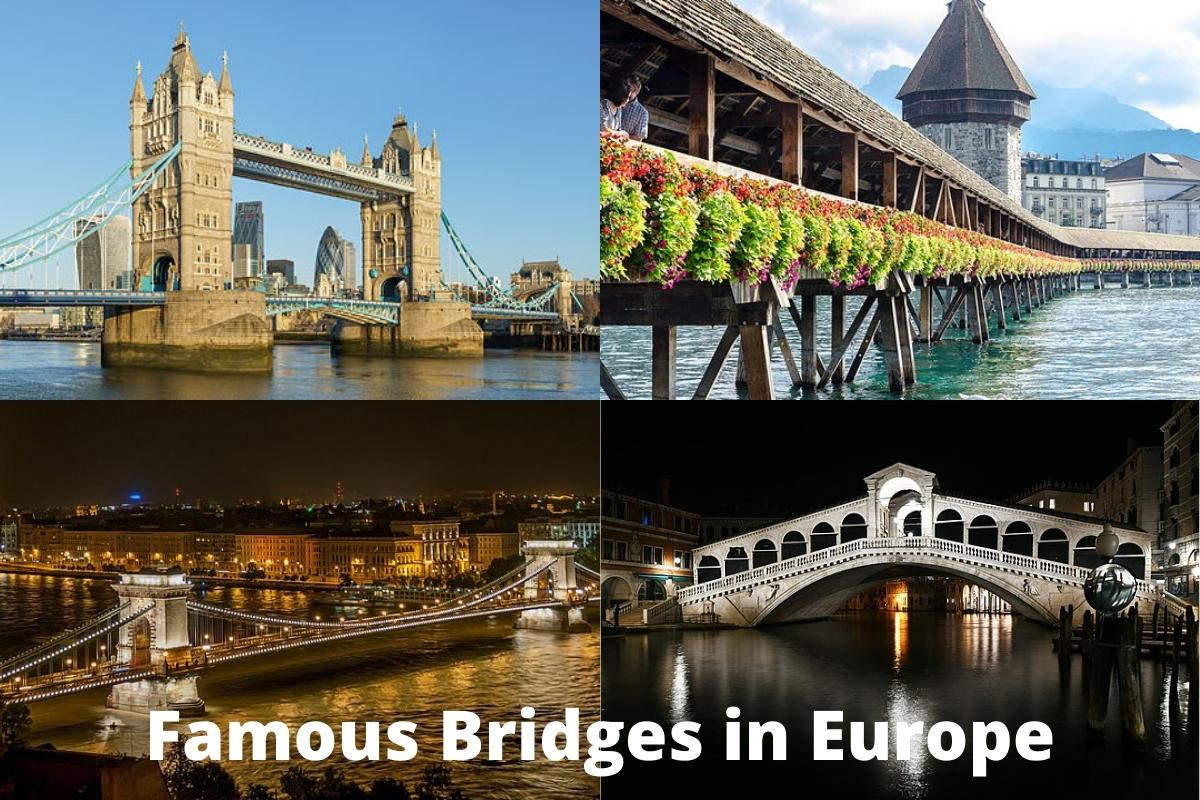Europe is home to some of the world’s magnificent bridges, with the historic archways and designs paving the way for modern architectural influences within the region.
Known to provide passageways for ancient inhabitants of the cities, these bridges are a testament to the knowledge, engineering, and artistic prowess that astounds locals and travelers to date.
Below, we look at 10 of the most famous bridges in Europe, the history, and the architects behind each.
Famous Bridges in Europe
1. Rialto Bridge
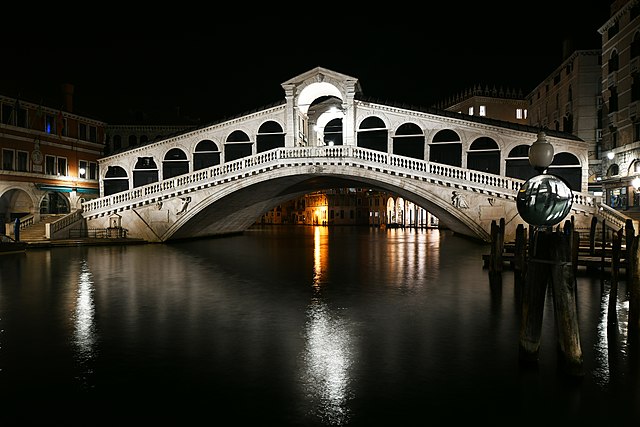
The Rialto Bridge has garnered acclaimed fame in Europe, currently standing as the oldest and most photographed bridge in Venice, Italy. It stretches over the Grand Canal, with tourists treated to romantic views of the famous Venetian Grand Canal that connects the districts of San Marco and San Polo.
While this masterpiece boasts stone architecture, the Rialto Bridge was initially a pontoon bridge. This was later replaced by a wooden bridge in 1255 to allow for increased traffic in the growing city.
It was later burnt during the uprising of 1310, rebuilt, and later collapsed under the weight of onlookers during a boat parade. In 1551, authorities gathered proposals for rebuilding the bridge, hosting a citywide design competition for its inhabitants.
Antonio da Ponte and his nephew won the commission to design and construct the Rialto Bridge, with the reconstruction completed in 1591, transforming it to its modern stone arch state.
2. Millau Viaduct
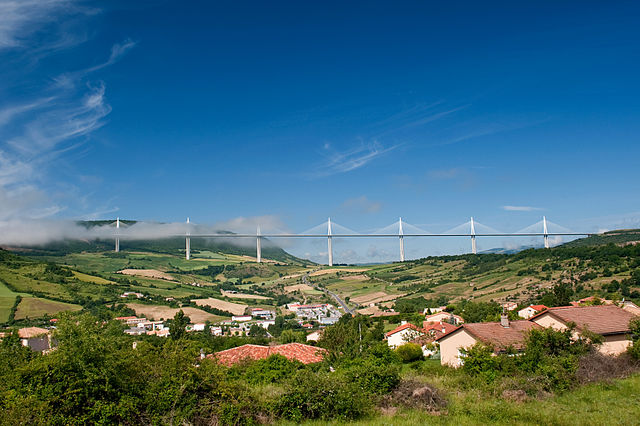
The Millau Viaduct is located in Southern France, spanning along the valley of the River Tarn that stretches across 343m.
It is one of the few cable-styled bridges in the modern day and ranks as the tallest bridge in the world. In addition to this, it holds the title of having the highest road bridge deck, the highest pylons, and the highest mast in the world.
Also Read: Famous Bridges in France
The Millau Viaduct was designed by Michel Vrlogeux and Norman foster and officially opened to the public for vehicular use in 2004.
Despite its construction from heavy metals such as steel and concrete, its airy appearance enhances its ethereal appeal as a tourist destination, making it a must-see for visitors. It currently holds the title of the tallest structure in France, outdoing the Eiffel tower.
3. Tower Bridge
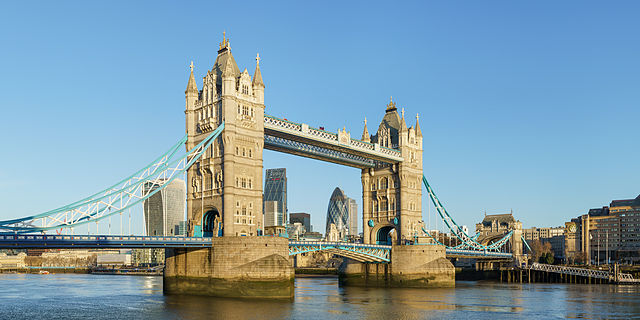
Another famous bridge is Tower Bridge in London, UK, often mistaken for the London Bridge. Unknown to most, the Tower Bridge is a combined suspension bridge and bascule that spans the Thames. The suspension bridges on the bridge can be raised apart, with locals considering it good luck to witness an open bridge.
It is known for its famous upper glass-floored walkway, where viewers are treated to the surrounding scenes during their commute to and fro the bridge. It was engineered by John Wolfe Barry, assisted by Henry Marc Brunel.
The construction began in 1886 with the bridge designed by Horace Jones and taking eight years to complete. The bascule bridge spans 61 m, and the two side spans, suspension bridges, each span 82 m.
4. Ponte Vecchio
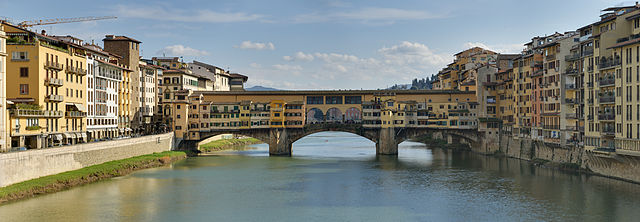
The Ponte Vecchio spans over the Arno river in Florence, Italy; the bridge is famous for its shops that house souvenirs and art dealers.
The Ponte Vecchio, translated to Old Bridge, is believed to have been built in 1345, with the original structure dating back to 966. While the architect remains unknown, scholars believe Ponte Vecchio was built for defense.
The Dominican friars heavily influenced the bridge, who prided themselves on their architectural sense of proportion. The original bridge was destroyed by a flood but was later constructed in stone.
Also Read: Bridges in Italy
It was, however, swept away again by floods, with the reconstructed 1354 model being strong to date. The Ponte Vecchio Bridge was the only bridge left unharmed during World War 2 as the Germans retreated to their country.
5. Kapellbrücke
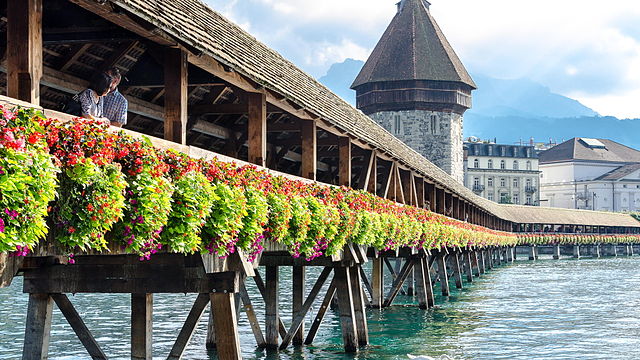
The Kapellbrücke Bridge, often referred to as the Chapel Bridge, is located in Lucerne, Switzerland. It is one of Europe’s oldest bridges and spans the Reuss River.
It was named after the nearby St. Peter’s chapel, with the wooden footbridge bordering the iconic Water Tower. The Water Tower served as a treasury, torture chamber, prison, and watchtower over the years, hence its historical importance in the country.
Also Read: Landmarks in Switzerland
The bridge was built in 1333 and was designed to keep the city’s inhabitants safe from external attacks. It was, however, destroyed by a fire in 1993 but was later rebuilt and opened to the public in 1994.
Unlike other bridges, the Kapellbrücke Bridge allows visitors to walk across a covered walkway, and features paintings on its interiors believed to have been added in the 17th century.
6. Széchenyi Chain Bridge
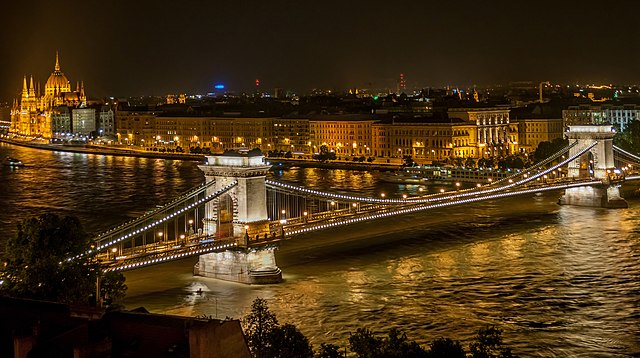
The Széchenyi Chain Bridge, named after Count Széchenyi, a major supporter of its construction, is located in Budapest, Hungary.
It marked a historic turning point in the country’s records, being the first bridge connecting Buda and Pest, the nation’s capital. It also became the first permanent bridge in the capital after the Hungarian revolution of 1848.
It was first opened in 1849, with the bridge designed by engineer William Tierney Clark and construction supervised by engineer Adam Clark. The 1945 German siege destroyed the bridge, but it was later reconstructed to its original form.
7. Charles Bridge
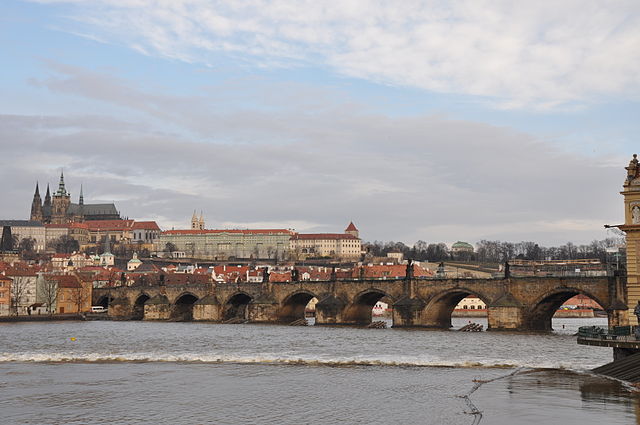
The Charles Bridge, formerly known as Stone Bridge, in the Czech capital of Prague is known for its gothic architectural design, with the remarkable baroque stone statues providing a one-off spectacle for its visitors.
Located along the Vltava River, it connects the historic old town of the city to the newer pars of Malá Strana in the Czech capital.
Construction of the Charles Bridge began in 1357 after the original Judith Bridge collapsed in 1342. Commissioned by the king and emperor Charles IV, Charles Bridge currently has 30 statues on either side of the bridge, with the statue of St. John of Nepomuk is the most popular of them.
8. Stari Most
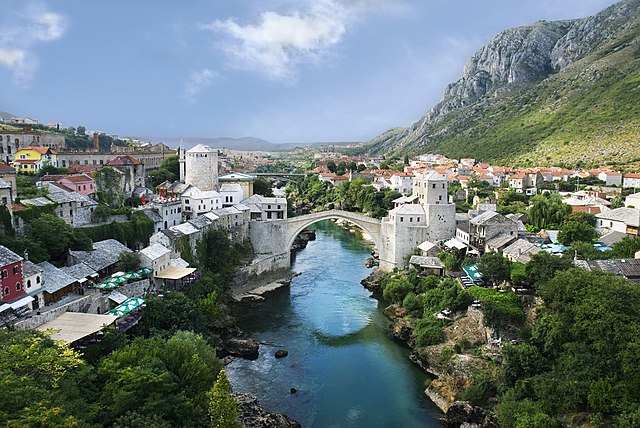
Located in Bosnia and Herzegovina, Stari Most, also known as the Mostar Bridge, symbolizes the country’s rebirth after the Croat-Bosniak war.
It spans over the river Neretva, with Stari Most translating to the Old Bridge and connecting two parts of Mostar city. The Ottomans constructed the original bridge nearly 500 years ago, with Suleiman the Magnificent commissioning it in 1557, taking nine years to build.
It was designed by Mimar Hayruddin, an apprentice of the architect Mimar Sinan who was credited with building numerous of the Sultan’s buildings.
The Stari Most was later destroyed in 1993 by an artillery strike during the Bosnian war, with a temporary bridge built in its place. It was later upgraded to a more stable cable-stayed bridge, with plans underway to replace the old bridge.
It was not until 2001 that reconstruction started. The renovation was carried out in two phases, with the first tasked to Hungarian army engineers.
The second was assigned to Spanish army engineers who relied on Ottoman construction techniques for the reconstruction. The build took three years, with its completion ending in 2004.
9. Clifton Suspension Bridge
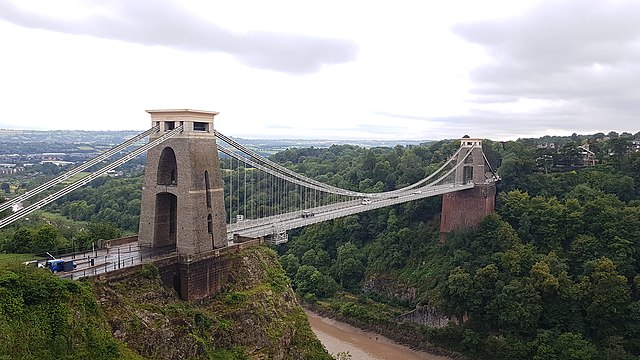
This bridge is suspended over the Avon Gorge and can be found in Bristol, England, and it spans the River Avon. In North Somerset, the bridge currently links Clifton in Bristol to Leigh Woods, acting as a toll bridge to provide income for its upkeep.
Its design is credited to Isambard Kingdom Brunel and was built in 1864 by William Henry Barlow and John Hawkshaw. The bridge was an essential crossing point for motor vehicles and pedestrians.
Originally designed as a stone bridge, modifications were made to alter the bridge to a wrought iron structure after its initial designs were put on hold by the Bristol riots.
Passersby are treated to a remarkable landscape view during the day, leading to a magnificent light show at night. Hot air balloon enthusiasts can experience Clifton Suspension Bridge views during the famous Bristol Balloon Fiesta in August.
The bridge also serves as a distinctive symbol for Bristol postcards, with the site being an important landmark for promotional materials and films.
10. Glenfinnan Viaduct
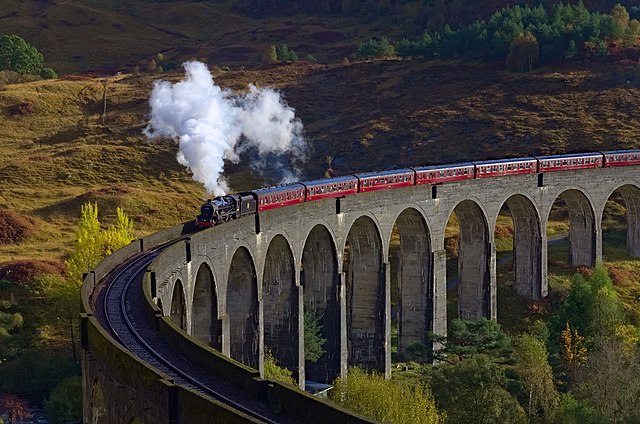
The Glenfinnan Viaduct in Scotland is an iconic bridge, gaining recognition from its appearance in the Harry Potter films.
Nestled in the Scottish landscape, the Glenfinnan Viaduct Project was overseen by Simpson and Wilson of Glasgow and was later constructed by Robert McAlpine and Sons, with the design comprising mass concrete shaped in an elegant curve.
Also Read: Arch Bridges
The viaduct was originally built to provide a passageway for the West Highland Railway over the valley home to the River Finnan. Despite the start of its construction in 1897 and its completion in 1898, the bridge was not in use until 1901.
This was not until the railway line from Fort William to Mallaig was completed and opened for use. The bridge marked an important milestone in civil engineering with its structure made from mass concrete rather than the regular reinforced concrete. This made it even more robust, eliminating cracks due to less tension.
Currently, it connects to the Glenfinnan Station, spanning 1,000ft and 100 ft above ground. It is the longest viaduct in Scotland and the only one carrying a single rail line. One of its kind, the viaduct is held together by arches spread out by 15 m.
Designed to connect two points over a valley, the viaduct’s use of arches came in handy in helping it achieve its well-known symmetry, making it possible for railway use.

